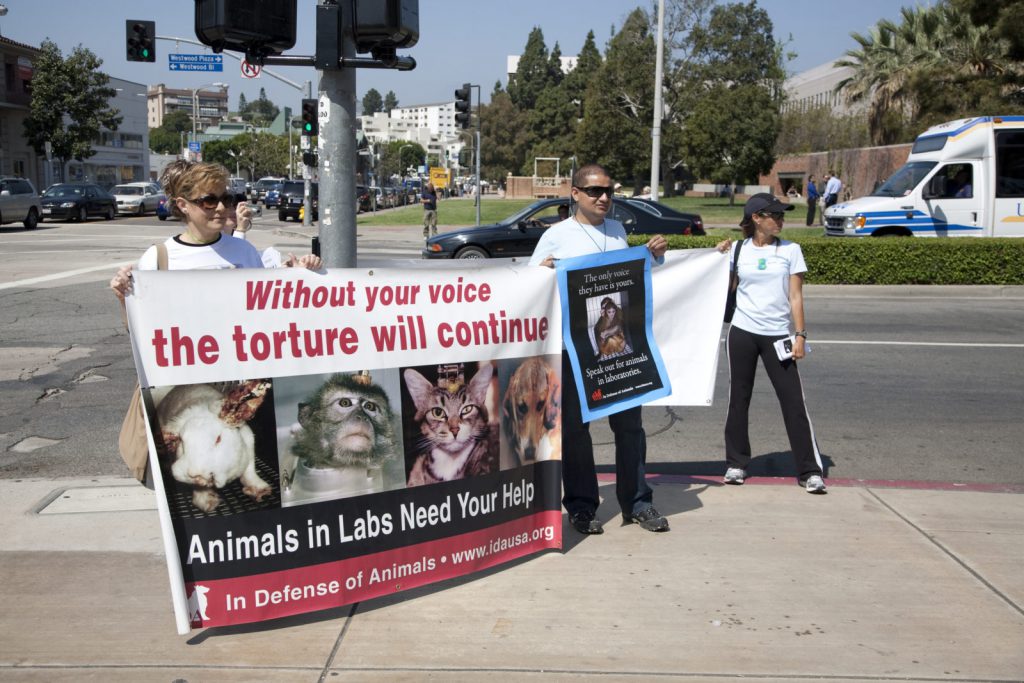
Published August 10, 2015
National Review - August 24, 2015 issue
At the same time that scientific advances force us to gaze upon the animal kingdom with more respect, the proliferation of big and little cameras — of eyes everywhere — permits us to eavesdrop not just on animal play but also on animal persecution. It’s all documented, it all goes viral, and we can’t turn away, or claim ignorance, as easily as we once did.
– Frank Bruni, “According Animals Dignity,” New York Times, January 13, 2014
It’s been a while since anyone chatted as matter-of-factly about repurposing human body parts as Planned Parenthood officials did in those undercover videos captured by David Daleiden’s Center for Medical Progress. In the words of one doctor caught on film, “I’m gonna basically crush below . . . I’m gonna crush above” certain desired morsels such as “heart, lung, liver.” No, most people probably hadn’t heard such candid talk for years now — decades, even. Not this side of Birkenau, anyway.
Organ tallying, boasts about efficiency, persnickety attention to detail, niggling over “transport costs” for the dead: Given the unfortunate historical associations triggered by all that, it’s no mystery that much of America has gotten a bad case of the creeps. The real wonder would have been if Planned Parenthood president Cecile Richards hadn’t had to appear on a Sunday talk show, complaining about “entrapment” and “sensationalism” and “militants” and “smears.”
So powerful are the videos that some people are already talking about them as a turning point in the public perception of abortion — as the pro-life movement’s Uncle Tom’s Cabin, as Noemie Emery has put it. Everyone who thinks that 58 million deaths are enough already devoutly hopes that she’s right.
I wonder whether those videos might reconfigure our moral landscape in one other way. For many years now, the similarities between the industrialized, cavalier trashing of human life and the industrialized, cavalier trashing of animal life have been plain for anyone to see — at least for people who could bear to look. No, I am not saying with PETA president Ingrid Newkirk that a rat is a pig is a dog is a boy. I’m saying that visual evidence of the mistreatment of animals has changed society, its carnivores and its non-carnivores alike; that many more people than before want to disengage their consumer and other choices from animal suffering; and that maybe, just maybe, the Planned Parenthood footage will make other people out there think twice about the moral connection between born animals and unborn human beings.
For whatever those videos reveal of the inner workings of the abortion industry, they point as well to this related truth: Defending animal welfare while remaining adamantly pro-choice with respect to the abortion of human animals is not morally and intellectually sustainable. As an argument retaining any credibility, it’s over.
Here’s why. If an analogous series of undercover videos had documented the cold-blooded mass-scale killing, dissection, and part-selling of other members of the animal kingdom — elephants, say — all hell would have broken loose by now. Moreover, it would be issuing specifically from quarters that are either sitting out the debate over Planned Parenthood or on the wrong side of it. Every animal-welfare organization would be parading in the streets with pictures of the carnage, collecting petition signatures and demanding new legislation. Every Millennial with a Facebook page would post a new symbol of righteousness — for starters, Cecil the lion. From the New York Times to Media Matters, Huffington Post to Jezebel, the liberal-Left blogosphere would thunder with cries for justice and humanity. And they would be joined by many others outside their precincts, by people who just can’t bear cruelty to animals.
To point out the obvious similarities between pictures of callously destroyed fetuses such as those in the videos and pictures of other callously destroyed animals already out of the womb isn’t to posit moral equivalence. Nor is it to expect moral change overnight. But this moment should be seized for what it is: a new opportunity to reach people of good intentions who are concerned for animal well-being, and to show them why they should want no part in the industrial bloodbath that is abortion on demand.
Because if worrying about Big Farm is enough to keep you up at night, worrying about Big Baby-Parts Farm should give you insomnia for the rest of your life.
In one statement after another, officials of Planned Parenthood and other apologists for it have furiously sought a linguistic alchemy that can turn crushed skulls and harvested organs into humanitarian science.
The first thing about their rhetoric that should raise a red flag for any proponent of animal welfare is this: Big Abortion’s every line of defense has been ripped straight from the playbook of Big Farm.
We did nothing illegal, says Planned Parenthood today — and so has said many a spokesman for that other industry when accused of animal misuse or cruelty. Big Farm made a similar Banquo’s-ghost appearance during Cecile Richards’s grim performance on George Stephanopoulos’s television show. The problem, she explained, is not abortion but the people who have a problem with it.
Really? The trouble with the undercover videos is the whistleblowers? Yes, say the abortionists — because the video activists are wrong to reveal those things, or biased in the way they present them, or extremists engaged in a long-term campaign against our organization.
Is anyone else prickling with déjà vu?
For years, pro-animal activists have been infiltrating industrial farms and other sites where cruelty is suspected, delivering photographic evidence of animal suffering and harm. And for years, the industry has fought back against this kind of exposure, through, among other things, “ag gag” laws, which make it a crime to take pictures in such places.
What has the farm industry said in defense of such laws? That the animal photos — depicting cruelty that is often, like abortion, called a “medical procedure” — have been taken out of context. As the author of an ag-gag rule in Iowa put it, “farming and husbandry are not always pretty, and out-of-context images can be difficult to stomach. Grisly as they might be, such images typically show legal, veterinarian-approved practices.” Just substitute “abortion” for “farming and husbandry” in those sentences, and “doctor” for “veterinarian,” and that sound bite could appear in a Planned Parenthood press release.
Similarly, the National Pork Producers Council has complained about activists who take issue with farm-industry practices, saying about the controversial use of gestation crates for sows, for example, that “the pork industry cannot accept non-science based directives about production practices that are advocated by animal rights activists.” Subtract the words “pork” and “animal” and again you’re writing Cecile Richards’s next talking points.
Echoing this rhetoric, Planned Parenthood now attempts to discredit its opponents by referring to their supposed “agenda,” accusing them of “smears,” and saying that they “sensationalize” and “entrap.” It’s as if the same PR firm were doing the messaging. (Is it?)
The reasons for people who are concerned with animal welfare to disengage from Planned Parenthood are simple. Anyone aping your adversary on point after point is probably not your friend. Ethically and conceptually, it’s just too much work to pretend that these two things, animal welfare and abortion on demand, have ever been compatible — and it’s more labor all the time.
Efforts by progressives to keep their pro-animal sentiments from softening their “pro-choice” intentions become harder as science itself keeps documenting the extraordinary and ever more intricate inner workings of both animals and human beings even from the earliest stages of development. By now, the resulting cognitive dissonance is positively deafening. Consider these nonsensical ideological juxtapositions:
Photographic evidence of the dignity of animals at any stage is good. Photographic evidence of the dignity of human animals is bad if it’s taken in utero or following an abortion.
People who tear apart little baby animals are monsters. People who tear apart little baby humans are scientists.
Trackers with guns who kill animals are evil. Trackers with ultrasound machines who kill unborn human animals are heroes.
Violence against other species should be illegal and rare. Violence against certain members of one’s own species should be legal and unrestrained.
And on it goes, ad nauseam.
Above all, people moved by the desire to help animals need to understand that Big Abortion is a moral parasite. The principled clarity of the pro-animal position is compromised by association with the violent, bloody business of Planned Parenthood and friends. Moreover, that very conjunction makes some other well-meaning people — pro-lifers, especially — think that those who claim to be motivated by concern for animals are ipso facto not to be trusted.
Ideological schizophrenia riddles discussions over animal welfare and abortion. About pro-animal activists surreptitiously using cameras to document some of the doings inside Big Farm, the New York Times hasn’t been able to say enough — in favor of the activists, that is.
Excellent investigative journalism has appeared in the news pages. Op-eds and other writing in defense of exposing violence and abuse have abounded. Everywhere, “transparency” has been the watchword. In a 2013 editorial on the ag-gag bills, the Times fumed that “their only purpose is to keep consumers in the dark, to make sure we know as little as possible about the grim details of factory farming.”
Yet today, instead of praising certain other brave whistleblowing videographers, the Times serves up story after story attacking them. Its editorial page has this to say about those who have documented Planned Parenthood’s barbarities: The “video campaign is a dishonest attempt to make legal, voluntary and potentially lifesaving tissue donations appear nefarious and illegal.” Substitute “food manufacture” for “tissue donations” and you have messaging that could apply to many a scrutinized slaughterhouse.
Progressivism wants what logic won’t allow: squaring the circle of sympathy for defenseless farm animals with ruthlessness toward defenseless unborn human animals. This has been especially and most flagrantly true of leftish journalism. In 2013, again in response to ag-gag bills, one Mother Jones subhead read: “Horrific abuse. Rampant contamination. And the crime is . . . exposing it?” True to form, in response to the abortion-sting videos, the publication assured readers that “Planned Parenthood ‘Sting’ Video Is Yet Another Right-Wing Nothingburger.” (For further illustration of the double standard here, just imagine Mother Jones issuing a headline like “Meat Industry ‘Sting’ Video Is Yet Another Right-Wing Nothingburger.”)
In 2014, Salon took whistleblowing over animal abuse to the next level, running a piece about a reporter’s using drones to investigate factory farming. It was titled “The Food Industry’s Hiding Something: How to Expose America’s Most Secretive Industry.” But today, when it comes to exposing Planned Parenthood, Salon insists that there is nothing to see: “In their zeal to take down reproductive rights, anti-abortion extremists have seized on a total non-issue,” says one subtitle. Another speaks of “fraudulent video” and the “Planned Parenthood Hoax.”
In a 2014 article praising “camera-toting activists on factory farm floors,” Slate included one line that, in retrospect, is particularly uncanny: “While the industry might not like what it sees in the videos, it can’t make a convincing case that the footage has no value.” By contrast, in response to the new undercover videos of ladies who crunch, the same publication has run pieces arguing that this video footage has no value at all: The first video, judges Slate, was “completely misleading”; the second, “also a big bust.”
One big thing is needed in this new, post-video social order. It’s for animal supporters of all kinds, and especially those who have been in the forefront of that beneficent movement, to connect the dots between unborn human animals and their empathy for animals of other species.
The line between grinding baby male chicks alive and tearing apart a thriving fetus is straight as a scalpel. It isn’t skew. The two things meet somewhere. Most of us can rely on simple moral sense to know intuitively that both of these dissolute kinds of killing are wrong. Again, philosophical over-scrupulousness about “moral equivalence” is an intellectual red herring here. In real life, kindness toward animals and kindness toward humankind is almost never a zero-sum game.
Yes, it may take a long time for pro-animal people who haven’t considered themselves pro-life before this to say goodbye to all that cognitive dissonance. It will require courage, too, especially for the first ones who break ranks with their pro-choice friends. Apostasy, and especially high-profile apostasy, tends to be met with penalties.
And yet there’s plenty of precedent suggesting that, confronted with the moral reality of images that are ever harder to avoid, people will change their minds. After all, many consumers, faced with evidence that their choices inadvertently encouraged cruelty to animals, have changed their habits large and small. Some have become vegetarians. Some have become mindful carnivores, meaning consumers who buy from sources that promise cruelty-free farming — and more and more companies cater to that widening desire. Some people adopt rescue animals rather than buy purebred pets from stores. Others seek ways to help elephants, dolphins, birds — and lions; witness the recent outpouring over a beautiful beast in Zimbabwe killed illegally for sport.
More people, especially on the right, are also now saying that their pro-life position led them to being pro-animal. In light of those macabre new videos, the pro-animal movement in all its forms should return to that consistency. If you don’t want the government subsidizing Big Farm, you don’t want it subsidizing Big Baby-Parts Farm. If clubbed baby seals make you cry, so should a crushed “calvarium.” And if you’re mocked in some places for changing your mind about abortion just because your heart expanded, shake it off. Mahatma Gandhi, William Wilberforce, and others who are both pro-animal and pro-life are better intellectual company anyway.
Pace the surface cleverness of Ralph Waldo Emerson, consistency isn’t the hobgoblin of small minds. It’s what reason demands of civilized people. You don’t have to be religious or conservative or anything but a human being with a shred of fellow feeling to want Planned Parenthood and everything that it stands for gone forever. Merely being human, with a shred of fellow feeling, is enough. You just have to have what every pro-animal man, woman, and child out there already has in abundance: empathy for the small and weak and defenseless.
Mary Eberstadt is a senior fellow at the Ethics and Public Policy Institute in Washington D.C. Her 2014 Commencement Address to graduates of Seton Hall University, “You are More Important than You Know,” appears in the bookRemembering Who We Are: A Treasury of Conservative Commencement Addresses, edited by Zev Chafets (Sentinel).








